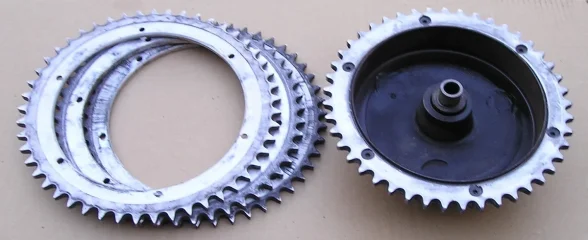Hi All.
I would like to know if there is a modification for putting a conventional rear sprocket on to the rear hub of a 850 MKII.
That would replace the original norton rear spocket / brake drum single unit setup!
I am curious that perhaps someone out there has been successful in this operation???
Brewer
I would like to know if there is a modification for putting a conventional rear sprocket on to the rear hub of a 850 MKII.
That would replace the original norton rear spocket / brake drum single unit setup!
I am curious that perhaps someone out there has been successful in this operation???
Brewer

